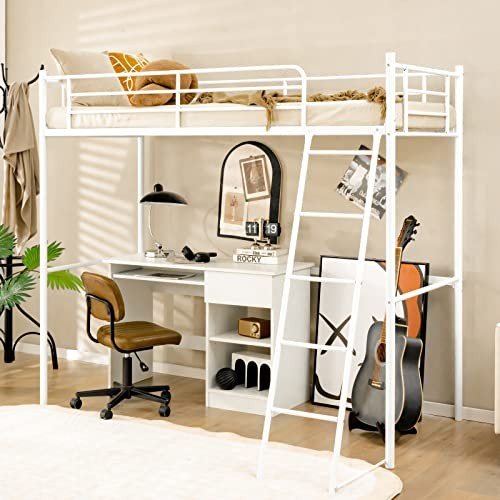
Bunk beds are a practical service for optimizing space in children's spaces, guest lodgings, and dorm rooms. They supply an efficient method to house several people within a confined area while adding a fun twist to bed room decor. This short article explores the important elements of acquiring a bunk bed, including functions, designs, and often asked concerns.
Bunk beds Bunk beds are popular for a myriad of reasons:

When purchasing a bunk bed, several features need to be considered:
| Feature | Considerations |
|---|---|
| Product | Typical materials include wood, metal, and composites. Wood is tough and aesthetically appealing while metal is typically more inexpensive and lighter. |
| Safety Features | Search for guard rails on the leading bunk and safe and secure ladders to prevent mishaps. Some designs come with extra safety features, such as anti-tip angles. |
| Size | Bunk beds can be found in different sizes, consisting of twin over twin, twin over complete, and full over complete. Choose a size that fits your space and accommodates your users. |
| Weight Capacity | Ensure the bunk bed can support the combined weight of residents without compromising safety. |
| Design Style | Designs range from standard to contemporary. Choose a style that lines up with your space's aesthetic. |
| Bed mattress Compatibility | Validate whether the bed frame supports basic mattress measurements and thicknesses. |
Bunk beds are available in several styles to fit diverse choices and requirements. Here are some popular choices:
Standard Bunk Bed: This classic style features two beds stacked vertically, generally with a ladder entryway.
Loft Bed: This design has only the leading bunk, enabling open space below, which can be used for a desk, seating, or storage.
L-Shaped Bunk Bed: Arranged at right angles, this style offers a distinct design and offers extra space for additional furnishings.
Twin Over Full: This style includes a twin mattress on leading and a full-sized mattress on the bottom, accommodating more sleeping space.
Triple Bunk Bed: Great for larger households, this model features 3 stacked beds but might need higher ceilings.
Here's a fast comparison of the various types of bunk beds:
| Bunk Bed Type | Space-Saving | Adaptability | Aesthetic Appeal |
|---|---|---|---|
| Requirement Bunk Bed | Yes | Moderate | Classic |
| Loft Bed | Yes | High | Modern |
| L-Shaped Bunk Bed | Moderate | Moderate | Special |
| Twin Over Full | No | High | Flexible |
| Triple Bunk Bed | Yes | Low | Functional |
Security is especially crucial when it concerns bunk beds. Here are some essential tips to bear in mind:
The choice between wood and metal mainly depends on personal preference and designated use. Strong wood is durable and attractive, while metal is normally more inexpensive and lighter.
A ceiling height of a minimum of 8 feet is generally recommended for a standard bunk bed. It enables adequate space between the leading bunk and the ceiling for security and comfort.
Yes, lots of bunk beds are designed to accommodate adults, but it is necessary to examine the weight capacity and stability of the bed.
Lots of bunk beds support basic mattress sizes, however it's crucial to verify the density and dimensions for the best fit and security.
Regular upkeep, such as looking for loose screws, making sure bed mattress supports are in location, and keeping the bunk bed tidy, will help prolong its life expectancy.
Purchasing a bunk bed can be a fun and amazing experience, particularly with the range of styles and choices readily available. By considering functions, safety, and design styles, buyers can discover the best bunk bed to meet their distinct requirements. Whether for a child's bedroom, a visitor space, or a dorm, a well-selected bunk bed can be a beneficial financial investment in convenience, performance, and design.
No Data Found!

